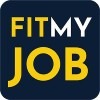

Understanding the Purpose of a Resume
A resume is not just a document; it’s a marketing tool. Its goal is to secure an interview by showcasing your qualifications in a structured and compelling way. Hiring managers often spend only a few seconds scanning each resume, so making a strong first impression is crucial.
Key Components of a Winning Resume
A good resume typically includes the following sections:
a) Contact Information
Ensure your resume begins with your full name, phone number, email address, and LinkedIn profile (if applicable). Keep this information updated and professional.
b) Professional Summary
A brief yet impactful summary of your expertise and career aspirations should follow. This should highlight your key skills and achievements in 3-5 sentences.
c) Work Experience
List your previous job roles in reverse chronological order. Include:
- Job title
- Company name
- Duration of employment
- Key responsibilities and achievements Use action-oriented language and quantify your results wherever possible.
d) Education
Mention your academic qualifications, including:
- Degree obtained
- Institution name
- Year of completion If you have relevant certifications, include them in this section.
e) Skills
Highlight your technical and soft skills relevant to the job you’re applying for. Use bullet points for better readability.
f) Additional Sections
You can also include sections like:
- Certifications & Training
- Languages Known
- Volunteer Experience
- Awards & Achievements


Common Resume Mistakes to Avoid
Including irrelevant or excessive personal details.
Using an unprofessional email address.
Listing job responsibilities instead of accomplishments.
Overloading the resume with industry jargon.
Submitting without proofreading.
Frequently Asked Questions
What is the ideal length of a resume?
The ideal length of a resume is one to two pages, depending on your experience. Freshers and early-career professionals should aim for a one-page resume, while experienced professionals can extend it to two pages. Keep it concise and focus on relevant details.
How do I make my resume stand out to recruiters?
To make your resume stand out: Use strong action verbs and quantify your achievements. Customize it for each job by incorporating relevant keywords from the job description. Keep the format clean and professional with bullet points for readability. Highlight your unique skills and accomplishments instead of just listing job duties.
Should I include a photo on my resume?
In most cases, no, unless specified by the employer. Many recruiters prefer resumes without photos to avoid bias. However, in creative fields like modeling or acting, including a professional headshot may be necessary.
Traditional vs. Modern Resume Writing: A Comparison
Resume writing has evolved significantly over the years, shifting from traditional formats to modern, dynamic approaches. Traditional resumes were often lengthy, text-heavy, and focused primarily on listing job responsibilities and academic qualifications. They followed a rigid structure with generic objective statements and minimal customization for different job applications. In contrast, modern resumes are concise, visually appealing, and emphasize achievements over duties. They incorporate action verbs, quantifiable results, and industry-specific keywords to pass through Applicant Tracking Systems (ATS). Additionally, while traditional resumes relied heavily on printed or PDF formats, modern job seekers also use digital platforms like LinkedIn to showcase their professional brand. The evolution of resume writing highlights the growing importance of personalization, digital presence, and strategic content in today's competitive job market.
 India and the UAE are currently served by our service, and we're expanding to the USA.
India and the UAE are currently served by our service, and we're expanding to the USA.